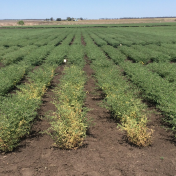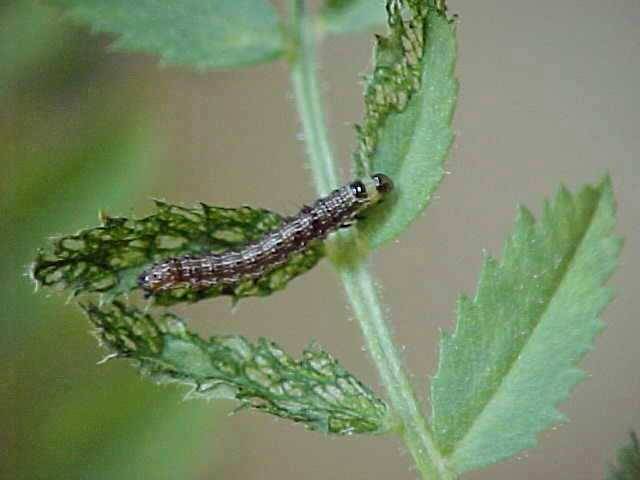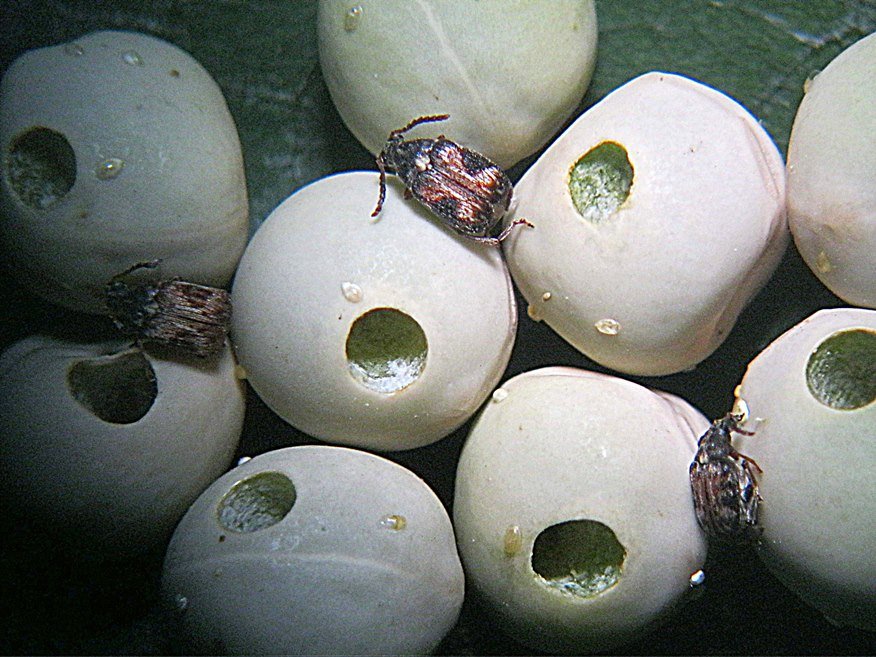A recent survey of chickpea fields across the Darling Downs, including areas around Dalby, Cecil Plains, and Chinchilla, has revealed the presence of several viruses affecting chickpea crops. Among the viruses detected were alfalfa mosaic virus (AMV), phasey bean mild yellows virus (PBMYV), turnip yellows virus (TuYV), and bean leaf roll virus (BLRV). Alfalfa mosaic virus (AMV) AMV was the… Read more »
Chickpea growers need to stay vigilant for fungal diseases, especially as crop canopies close and wet weather and heavy dews occur. Recent reports from central Queensland have highlighted cases of white mould caused by Sclerotinia spp. Meanwhile, wet conditions in southern Queensland have led to instances of phytophthora root rot in susceptible paddocks. Across all regions, growers should also monitor… Read more »
Helicoverpa are the primary insect pest of chickpeas. Beneficial insects that are present in many crops do not thrive in chickpeas, so successful helicoverpa management relies heavily on monitoring and identification, appropriately timing control to crop stage, and using the recommended thresholds. Monitoring involves regular in-field checking with a beat sheet. Additionally, moth numbers can be monitored using pheromone traps… Read more »
Helicoverpa armigera active now. This spring a number of agronomists have just started monitoring pheromone traps across the northern region, and the results from the past two weeks illustrate how useful pheromone traps can be. Over the past 1-2 weeks, the traps are catching relatively high numbers of Helicoverpa armigera, and low catches of H. punctigera. In September it is generally assumed that… Read more »
There have been two reports recently of cowpea bruchid activity, with these pests infesting pulse crops in the field prior to harvest. The first report concerned the cowpea bruchid (weevil) Callosobruchus maculatus in field peas from Goondiwindi. The bruchids were noticed at intake and continued to breed in an untreated grain sample post-harvest. This clearly indicated they were not pea… Read more »
Calculating the economics of control is critical to making a decision about if and when Helicoverpa populations in chickpeas require treatment. This season, for the first time, growers and agronomists have access to an on-line calculator to help them make these decisions. The calculator overcomes the need to try and remember the formulas in the field. Best of all,… Read more »
With some chickpea crops being sprayed out, rather than harvested, there are reports of helicoverpa larvae surviving on crop residues. The survival of larvae, particularly large late instar larvae, poses a threat to subsequent crops that may be sown directly into the chickpea residues. It is important to check for surviving larvae under the chickpea residues before the next crop… Read more »
With the approach of spring, helicoverpa start to become active. In CQ, chickpea crops are attractive to moths, and it is timely to revisit some of the key points related to making decisions about control of this pest in crops.In this article, I wanted to discuss a couple of the recommendations which some growers and agronomists have found a bit… Read more »
Over the last week or so we have received a number of enquiries about how best to manage new egg-lays, and populations of small larvae, in chickpea crops that are close to dessication and senescing. Of most concern are crops that still have reasonable areas of green crop in them, and what the likelihood of damage is if the weather… Read more »
A comprehensive overview of Helicoverpa management in chickpea can be found in the DPI&F brochure Helicoverpa management in chickpea (2007). Key management decisions The following is an excerpt from the Helicoverpa management in chickpea brochure, and deals specificially with determining whether an infestation of helicoverpa warrants control – based on the economics of potential yield loss vs cost of control…. Read more »




